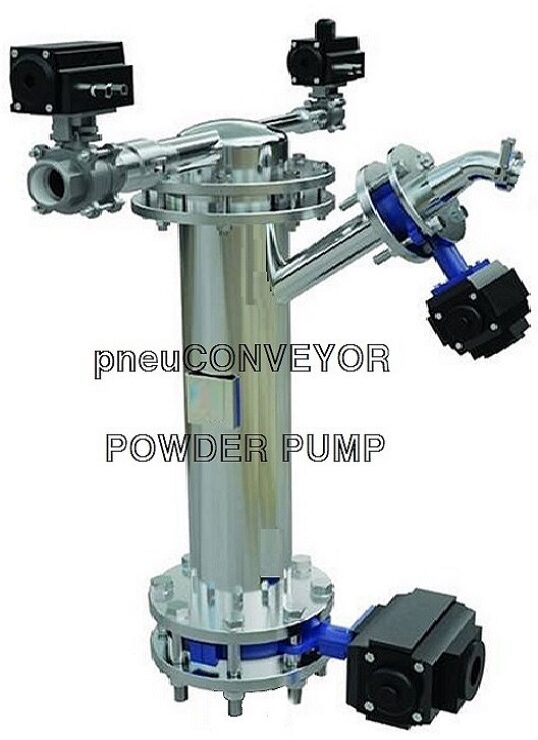VACUUM POWDER TRANSFER SYSTEM

Transporting large volumes of hazardous or sensitive powders and granules across large distances and height is a challenge as normal conveying systems like bucket elevators or screw conveyors are out of the question. For such special cases, Pneuconveyor systems & engineers develop a very effective Powder Conveying System using Vacuum. The innovative vacuum powder transfer system is used to transfer from almost every receptacle or machine and be charged into any type of receiver. The system allows the powder to be charged directly into Mixer / closed hopper/vessels etc. in a totally safe way preventing dust formation. The system can be retrofitted/integrated into an existing production line. The biggest advantage of using the system is that the energy consumption is very low.
FEATURES
No Dust formation
Gentle handling of the transfer material
Reliable, robust Vacuum pumps from reputed manufacturers
Low Energy Consumption
Easy maintenance
Designed for sanitary applications
Applications
The Powder Transfer System has many advantages over conventional conveying systems like screw conveyors or bucket elevators. We have supplied this system to a number of clients in the following industries:
1. Food Industry
2. Pharmaceutical Industry
3. Animal Feed Industry
4. Fertilizer Industry
Preferred applications: For reliable feeding of free-flowing powders and granular bulk material to processing machines in the Pharmaceutical, Bulk drug, food, plastic, and chemical industry. The material can be picked up from e.g. sacks, drums, containers, or silos. The type PC- receivers are used as individual receivers, with a separate blower each, in a discontinuous vacuum, low-velocity vacuum, and dense-phase conveying systems. They are mounted on the batch hopper of the processing machines where they serve for separating the bulk materials.
Functional principle: When switching the blower on, a vacuum is generated causing the product to be transferred when switching the blower on, a vacuum is generated causing the product to be transferred via the conveying line from the pickup point to the receiver. When the conveying phase has ended, the outlet valve opens and the product is discharged. A new conveying cycle starts when the level control in the outlet requests more product. The filter is purged by automatically compressed air pulses after each conveying phase, and the air escapes via the vent filter. The sequence of the operating cycles is controlled by a freely programmable or an electronic control system. The actual operating state is displayed at the electronic control.

